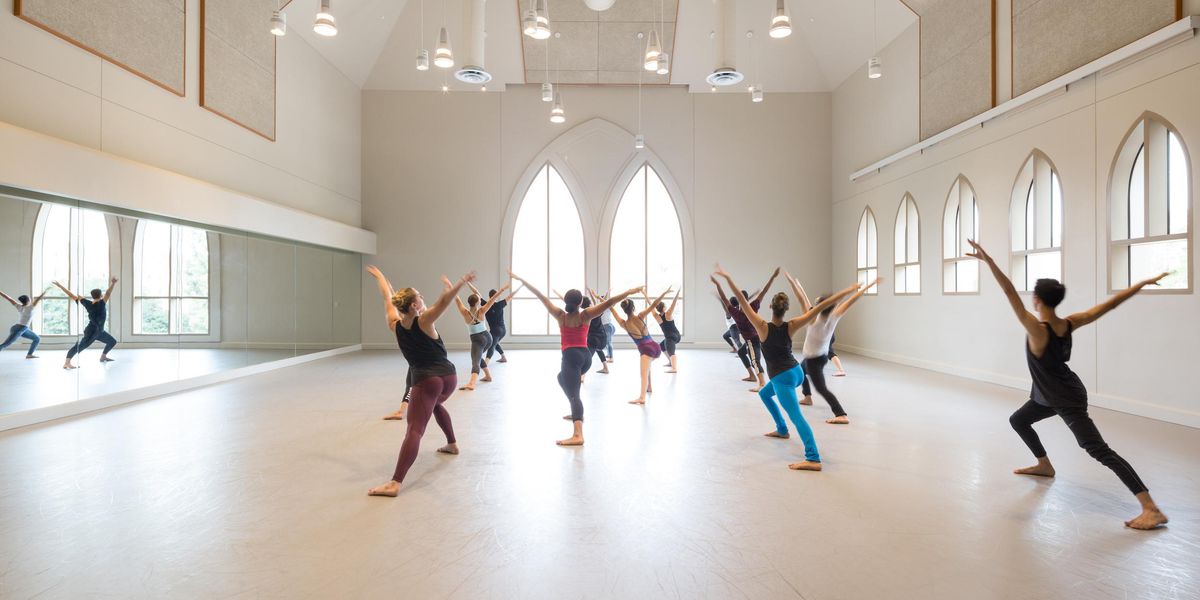Making It Happen: Putting Countries in Dialogue Through Dance
Istanbul-based artists Mustafa Kaplan and Filiz Sizanli. Photo by Top: Marc Coudrais, Courtesy QC.
The Department of Drama, Theatre and Dance at Queens College (QC) is exceptionally diverse. In Edisa Weeks’ modern class, for instance, it is typical to have Russian, Korean, Chinese, Iranian, South American, and Greek students dancing beside native New Yorkers, who themselves represent cultural communities ranging from Orthodox Jewish to African American. Most are commuter students, dividing their time between school and full- or part-time employment; many are the first members of their families to pursue higher education.
Given its large immigrant student body and its location in the most ethnically diverse county in the U.S. (Queens, New York), QC is dedicated to facilitating cross-cultural dialogue. To this end, the college started a new campus-wide project last year, the “Year of” program, which fosters learning about the arts, politics, history, economy, and ethnicity of a different country each year. In exploring that particular culture, the dance program plays an integral role. Faculty members select visiting artists and organize performances, lectures, and workshops that invite dance students and the larger QC community into an artistic exchange with the featured culture.
This year, Turkey is the honored country, and Edisa Weeks has spearheaded efforts to bring in intriguing contemporary Turkish artists. After consulting with André Lepecki, an acclaimed cultural anthropologist and professor of performance studies at NYU, she approached Gurur Ertem, Ayse Orhon, Mustafa Kaplan, and Filiz Sizanli, all Istanbul-based postmodernists (or as she puts it, “postpostpostmodernists”), who will be in residence at the college for a week this month. They plan to teach fresh approaches to technique and composition, lecture on Turkish contemporary dance practices, and offer a free performance and Q&A on Feb. 25.
Weeks approached artists whose work is considered groundbreaking in Istanbul; she hopes the experience will expand her students’ understanding of “What is dance and how do we perceive it?” She sees the potential for these artists to offer new ways of identifying with dance, its processes, and its social significance. Many of her students, she says, have had little exposure to concert dance traditions, but they are familiar with traditional dances from their respective countries. Together, their dance backgrounds span a huge range: Irish dancing, Chinese peacock dances, bachata, merengue, salsa, the hora, Russian dances, bharata natyam, Senegalese sabar, breaking, and hip hop.
Like the student population, the four visiting Turkish artists hail from diverse and non-classical dance backgrounds. In their choice to do postmodern art, as opposed to classical or folkloric work that serves a nationalistic agenda, they relinquish most opportunities for funding. As a result, they have to be inventive, passionate, and persistent to get their vision across. Weeks sees the potential for exciting connections and dialogue for all involved.
During the fall semester, Asli Bulbul, formerly of the Bill T. Jones/Arnie Zane Dance Company, made a new work for QC students based on the poetry of Rumi, the ancient poet who spent most of his life in what is now Turkey. Weeks explains that this project gave many students their first introduction to this 13-century mystic and the Sufi tradition he represents. She hopes it will allow them to consider his philosophy in relationship to their own lives. For instance, both the poet and QC have the same explicit mission to “learn so that we may serve.”
The “Year of” program got off to a stimulating start in 2010 with the “Year of China.” For the dance component, choreographer and dance director Yin Mei recruited visiting scholars from the Beijing Dance Academy, who taught the history and technique of traditional Chinese folk dances. Mei, who is currently in Hong Kong on a Fulbright fellowship, made a work for both her students and the visiting artists. Samantha Beneventano, a senior at the time, participated in this work as well as a duet, which she built collaboratively with visiting artist Hu Yan. “Through gestures and movement, we were able to understand one another,” Beneventano reflects. “It was wonderful to see Hu Yan take aspects of Chinese dance and incorporate it with my background in modern dance. We created a genuine collaboration where we both stayed true to our own aesthetics.”
The university is organizing an array of events surrounding Turkey’s politics, music, art, language, and geography. It is also planning events that will engage local ethnic communities with ties to that part of the world. The year will culminate in the opportunity for students to travel overseas to Turkey and hopefully lay the groundwork for future collaborations. The ongoing goal is to spark conversation and to build lasting relationships with scholars and artists in other countries. Plans are already underway for future years celebrating India, Brazil, and South Africa.
Inset: Beijing-based dancer Su Xue Bing, a visiting scholar at QC last year. Photo by Ma Haibo, Courtesy QC.




